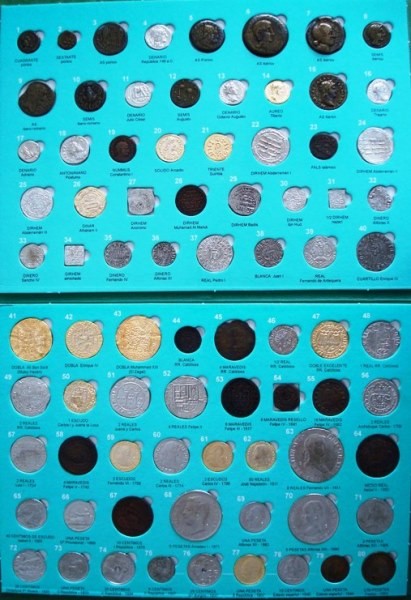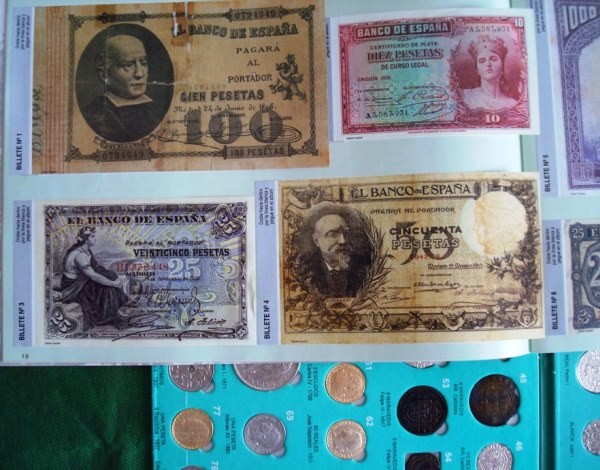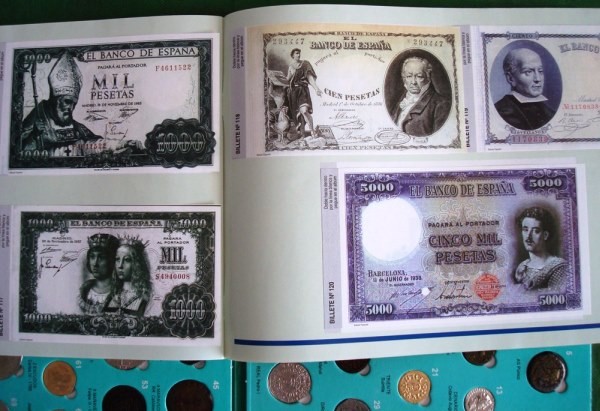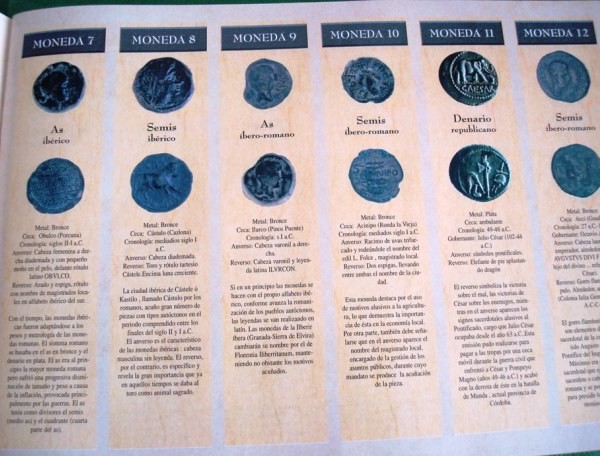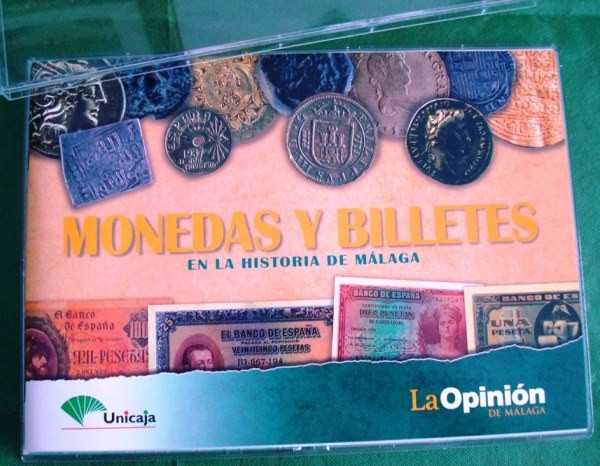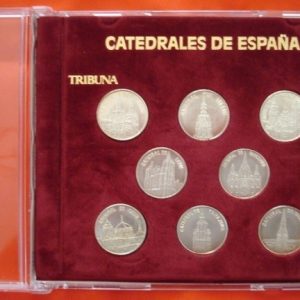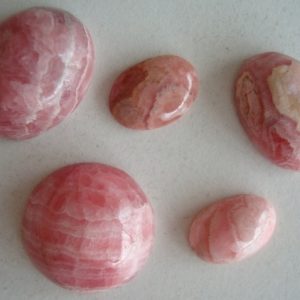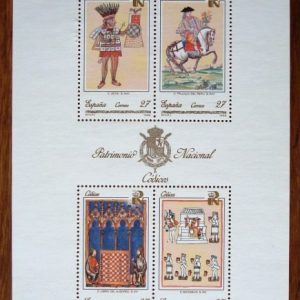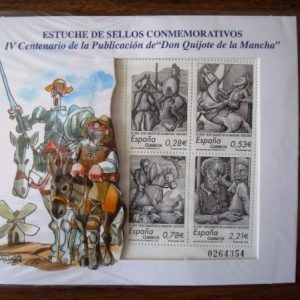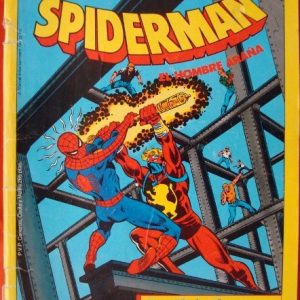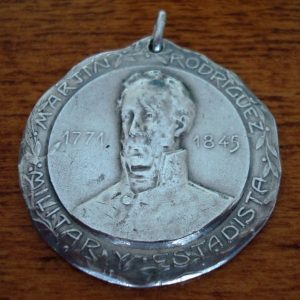Description
Banknotes and coins in the history of Malaga is an exclusive collection that daily La Opinion de Málaga offered its readers for 81 days from 25 May 1999. A historical document of high value to the general public discovers part of the Malaga history (and Spain in general) through the coins and notes, always witnesses of time. This great work had a large number of collaborations in the difficult task of research and documentation and, especially, in the collection of the pieces. A study conducted by the historian Bartolomé Mora Serrano with the help of Carmen Alfaro, chief curator of the Department of Numismatics then the National Archaeological Museum.
A unique collection of coins and banknotes:
Move to today’s story faithfully is no easy task. A good way to approach any approach to the evolution of man is to know the different monetary systems that have regulated their trade and boost economic development. This unprecedented collection of coins, tries to present everything related to numismatics of the city, which used different coinages Malaga (and since the Middle Ages, all Spanish) since the founding of this Mediterranean city.
If the research work was hard, no less complex was playing coins, finding most original in poor condition by the passage of centuries. The process was very meticulously and expertly executed professional job, supported by leading-edge technologies in this field. As a result was achieved 10 years ago, with the approval of prestigious numismatic, quality work, always respecting sizes, weights and inscriptions.
All the pieces were reproduced in a long process of manufacture to get the look of satin, gold, silver or bronze, depending on the metal they were made the original, along with the aging process until the current appearance of the respective parts. Interestingly, each of the currencies is marked with a discreet “R” to avoid possible forgeries.
Most of the currencies that make up this collection are exact copies of existing parts in the various collections that have worked, although some are newly created because there were copies made from old documents and illustrations.
The collection consists of 80 120 coins and banknotes. Also, if unique is the historical value of the collection, its price increases for its unique character. All the molds were destroyed before a notary, which ensures that the collection is unique and unrepeatable.
The collection includes coins and notes more representative of the different civilizations that settled in the province of Malaga. The collection comes with a case file methacrylate (31.3 x 22.7 x 1.7 cm. 1200 g, total weight with coins and bills) accompanied by a catalog album where they are placed notes and detailed information of each of the coins. However, although the collection begins with the first coins of the local settlements in the province of Malaga, quickly echoed notes and coins that were used in the Kingdom of Spain until 1953 is made.
The currency and its history:
Since the advent of the currency in the late seventh century BC in what is now Turkey, the currency has become one of the most important forms of money. A mere fragment in cash subject to rules of weight and design, able to withstand the political authority that guarantees its value. Its importance makes the currency a faithful witness of the most varied aspects of those people who have made use of it. It has survived over the centuries witnessing social change and transformation and even cultural.
Samples of this step are evident in the numerous archaeological sites found in the basement of the province of Malaga. Its port location, its proximity to North Africa and accessibility by land and sea, made this coast a large shopping center.
The “Coins and Banknotes in Málaga History” collection is a representative document of a large part of the story from the third century BC until mid-twentieth century, which they reflect the different ways to trade and exchange wealth. Parts that are delivered are an exact replica of those in each of the periods: starting with a Punic quadrant currency used by Greeks and Phoenicians, the collection reaches the mid-twentieth century with the currency of 2.5 pesetas Franco era.
The monetary history of villages malacitanos has a very early origin marked by Greek coin circulation and especially the Carthaginian. From the first century B.C. Roman pattern fruit of their political dominance will prevail, marking a change in the patterns. With the Romans comes ace, bronze coin, and its divisions: half (semises), quarter (quadrant) and sixth (sextants). The transformations of the Roman Empire can be noticed in the progressive exchange and circulation: new monetary values begin to appear. The coinage in Malaga territories during late antiquity is punctual, unlike other Hispanic places. Visigoth conquest of the city in the early seventh century AD has its reflection appearing monetary gold coin called tremissis.
With the arrival of the Arabs in the peninsula in 711 starts one of the longest stages of the numismatic history. A new structure is imposed on all social, political and cultural orders. Muslims will come with fresh air and a radical change in monetary issues that primarily affects the design of the coins. Figures disappear to make way for epigraphic inscriptions, reproduce passages from the Koran, new weights and values that are embodied in the dinar (gold), dirham (silver) and felús (bronze) with bold and innovative designs are introduced. And along with these noble currencies coexists fals, pennies, dated between the eighth and ninth centuries, Islamic retail currency monetary system.
The coins of the Nazari Malaga, folds or dinarin, clearly illustrate the final stage of the Spanish-Andalusian Arabic or numismatics.
With the Catholic Monarchs medieval emissions are finished and begins what is called “modern currency”, by introducing a series of reforms that were maintained until the time of Philip II. Denominations changes, monetary patterns, types and legends occur. As shown in the collection include more than thirty coins dating from the fifteenth century to the mid-twentieth century. Of the names that are closest to us as real and shield and even the coppers, and average real coins, 2 reales, 4 coppers, highlight white, currency to which we owe the expression “being broke”, and it was a coin of small value used in everyday transactions of small amounts.
The peseta and dividers 15 pieces dated from 1869 to present 2.5 pesetas coin 1953.
The collection is completed with 120 bills that are accurate full color of the issued and circulated in Spain since the introduction of the “paper money” reproductions.
Shipping by the buyer, upon request and destination. Consult any doubt, and by the article you are looking for.




